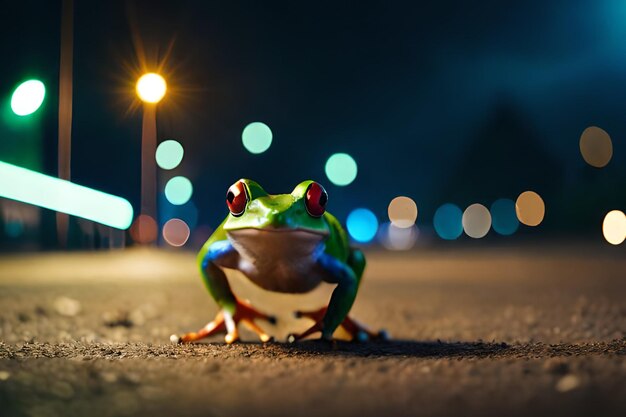Blog Credit: Trupti Thakur
Image Courtesy: Google
The Dancing Frog
In a groundbreaking discovery, scientists have identified a new species of ‘music frog’ in the lush landscapes of Arunachal Pradesh. This finding, based on comprehensive analysis involving morphological, molecular, and acoustic evidence, sheds light on a previously unrecognized member of the Nidirana genus.
Distinct Features of the Noa-Dihing Music Frog
The scientists, Bitupan Boruah, V Deepak, and Abhijit Das, detailed their findings in an article published in the November 15 edition of the journal Zootaxa. The newly discovered frog, scientifically known as Nidirana noadihing, exhibits distinct phenotypic characteristics that set it apart from its congeners.
- Morphological Traits:The Noa-Dihing Music Frog boasts a ‘robust’ body, with males measuring approximately 1.8 to 2.3 inches and females ranging from about 2.4 to 2.6 inches. Their ’rounded’ snouts and ‘smooth’ skin, adorned with bony protrusions on their backs, contribute to their unique appearance.
- Coloration:These amphibians showcase a striking color palette, featuring a ‘pale cream’ line bordered with dark brown along the center of their bodies. Light brown limbs, adorned with dark stripes, further enhance their visual distinctiveness.
- Habitat:The frogs were discovered nestled within vegetation in shallow pools of water, with male frogs emitting loud calls. Additional specimens were found in nearby marshy areas, the edges of a newly constructed pond, and along the side of a nearby road.
Naming the Species: A Tribute to the Noa-Dihing River
The new species received its name, Nidirana noadihing, as a homage to the Noa-Dihing River, the vicinity where these unique specimens were encountered and collected during field surveys conducted between August and September of the previous year.
Significance of the Discovery
This discovery marks the first confirmation of the Nidirana genus’s presence in India, expanding its known habitat beyond regions in Japan, Taiwan, China, Vietnam, Laos, and Thailand. The researchers stress the importance of exploring specialized habitats like marshlands, often overlooked, in uncovering new species.
Unique Vocalization and Other Characteristics
Noa-Dihing Music Frogs are distinguished not only by their size but also by their oval toe tips, the tubercles on their backs, and a distinctive call. The irregularly shaped and sized spots on their eyelids, along with dark stripes around their moderately large eyes, contribute to their unique visual features.
Conservation Implications
The discovery underscores the significance of continued exploration and conservation efforts in specialized habitats. The researchers emphasize the importance of marshlands and similar environments in unveiling the rich biodiversity that may be hidden within these often-neglected ecosystems.
The Emei music frog (Nidirana daunchina) is a species of frog in the family Ranidae. It is endemic to China, and is found in central China, in southeastern Sichuan, northeastern Yunnan and western Guizhou provinces. The species name refers to the type locality, Mount Emei in Sichuan, and its vocalizing abilities. The original name Rana musica was replaced with Rana daunchina as the former name was already taken.
The Emei music frog is a common species. Its natural habitats are subtropical moist montane forests, swamps, freshwater marshes, intermittent freshwater marshes, rural gardens, heavily degraded former forest, ponds, and irrigated land.
The Emei music frogs are medium-sized frogs: males grow to a snout–vent length of 46 mm (1.8 in) and females to 49 mm (1.9 in). Tadpoles are up to 47 mm (1.9 in) in length.
Vocalization
Vocalizations are important for sexual selection in frogs. the Emei music frog is unusual among amphibians in that both male and female frogs are vocal. Males vocalize and mate in well-hidden underground nests. Acoustic characters of the male calls from inside the burrows convey information concerning the burrow characteristics that female frogs can use when choosing mates. Male calls have thereby been likened to “real estate ads”. The role of female calls is to increase the rate of male advertisement, which may help females to find and choose mates.
Blog By: Trupti Thakur

24
NovThe Dancing Frog
Nov 24, 2023Recent Blog
India’s Steps Into 6GMay 15, 2025
The New Accessibility Feature of AppleMay 14, 2025
The Digital Threat Report 2024May 13, 2025
The MADMAX ExperimentMay 12, 2025
The EntraID Data ProtectionMay 10, 2025




